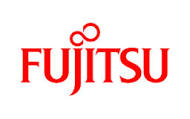2 mins read
Clear Service Orchestration Strategy Key to Unlocking the Benefits of Hybrid IT According to Study Commissioned by Fujitsu

November 26, 2024
Copyright 2023, IT Voice Media Pvt. Ltd.
All Rights Reserved

 Service Orchestration is the key to unlocking the true potential of complex Hybrid IT infrastructures, according to a recent survey commissioned by Fujitsu and undertaken by leading analyst firm, Forrester1. The newly published research findings reveal that successfully integrating, managing and optimizing Hybrid IT infrastructures means that enterprises are empowered to deliver real business value through their, which also leads to deliver greater flexibility and agility.
Service Orchestration is the key to unlocking the true potential of complex Hybrid IT infrastructures, according to a recent survey commissioned by Fujitsu and undertaken by leading analyst firm, Forrester1. The newly published research findings reveal that successfully integrating, managing and optimizing Hybrid IT infrastructures means that enterprises are empowered to deliver real business value through their, which also leads to deliver greater flexibility and agility.